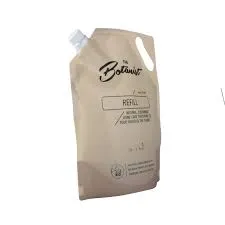- Afrikaans
- Albanian
- Amharic
- Arabic
- Armenian
- Azerbaijani
- Basque
- Belarusian
- Bengali
- Bosnian
- Bulgarian
- Catalan
- Cebuano
- chinese_simplified
- chinese_traditional
- Corsican
- Croatian
- Czech
- Danish
- Dutch
- English
- Esperanto
- Estonian
- Finnish
- French
- Frisian
- Galician
- Georgian
- German
- Greek
- Gujarati
- haitian_creole
- hausa
- hawaiian
- Hebrew
- Hindi
- Miao
- Hungarian
- Icelandic
- igbo
- Indonesian
- irish
- Italian
- Japanese
- Javanese
- Kannada
- kazakh
- Khmer
- Rwandese
- Korean
- Kurdish
- Kyrgyz
- Lao
- Latin
- Latvian
- Lithuanian
- Luxembourgish
- Macedonian
- Malgashi
- Malay
- Malayalam
- Maltese
- Maori
- Marathi
- Mongolian
- Myanmar
- Nepali
- Norwegian
- Norwegian
- Occitan
- Pashto
- Persian
- Polish
- Portuguese
- Punjabi
- Romanian
- Russian
- Samoan
- scottish-gaelic
- Serbian
- Sesotho
- Shona
- Sindhi
- Sinhala
- Slovak
- Slovenian
- Somali
- Spanish
- Sundanese
- Swahili
- Swedish
- Tagalog
- Tajik
- Tamil
- Tatar
- Telugu
- Thai
- Turkish
- Turkmen
- Ukrainian
- Urdu
- Uighur
- Uzbek
- Vietnamese
- Welsh
- Bantu
- Yiddish
- Yoruba
- Zulu
Innovative Applications of Cellulose in Sustainable Packaging Solutions for a Greener Future
Exploring the Role of Packaged Cellulose in Modern Applications
Cellulose, a complex carbohydrate and one of the most abundant organic polymers on Earth, plays a pivotal role in various industries. Its versatility and eco-friendliness have led to an increased focus on packaging applications, presenting new opportunities for sustainable practices in a world increasingly aware of environmental challenges. This article delves into the significance of packaged cellulose, its benefits, and its potential across different sectors.
Understanding Cellulose
Cellulose is a structural component of plant cell walls and constitutes a major portion of biodegradable matter. It is unique due to its robust and fibrous characteristics, lending itself to a variety of uses. In its natural state, cellulose is found in wood, cotton, hemp, and many other plants. However, when processed and modified, cellulose can be transformed into various derivatives that serve numerous functions in packaging.
One of the key features of cellulose is its biodegradability. Unlike many synthetic polymers, cellulose breaks down naturally, thus presenting a more sustainable alternative for packaging materials. As concerns regarding plastic pollution continue to rise, the demand for environmentally friendly materials has surged, making cellulose a highly sought-after option.
Applications in Packaging
Packaged cellulose can be used in numerous forms, including cellulose films, coatings, and composites. These materials have garnered attention in the food industry as they provide a protective barrier against moisture, oxygen, and other environmental factors that can compromise product quality. Cellulose-based films are particularly valued for their ability to extend the shelf life of food products without the use of harmful chemicals.
Moreover, cellulose coatings can be applied to various surfaces, improving product resistance to moisture and grease while maintaining breathability. This characteristic is crucial for food packaging, as it helps retain aroma and freshness without the risk of spoilage. Furthermore, these coatings can be tailored to meet specific needs, adapting to the requirements of different food items.
packaging cellulose

In the realm of non-food products, packaged cellulose is finding its way into the cosmetic and personal care industries. Cellulose-based packaging can effectively protect sensitive products from external elements, ensuring that they remain viable for longer periods. This innovation addresses consumer demand for sustainable packaging options in sectors where environmental impact is increasingly scrutinized.
Sustainability and Economic Impacts
The shift towards cellulose packaging not only promotes sustainability but also has significant economic implications. The use of renewable resources reduces reliance on fossil fuels and minimizes greenhouse gas emissions associated with traditional plastic production. Additionally, investing in cellulose-derived materials can stimulate local agricultural economies by creating new markets for cellulose sourcing. Farmers can cultivate crops specifically for cellulose extraction, fostering sustainable land use practices.
Challenges and Future Directions
Despite its numerous advantages, the widespread adoption of packaged cellulose faces some challenges. The production process can be more complex and costly compared to traditional plastics, which may deter manufacturers from transitioning. Additionally, ensuring the scalability of production while maintaining quality is crucial for sustaining the momentum of cellulose-based packaging.
Looking forward, research and innovation are essential to overcome these hurdles. Advances in technology can enhance the production efficiency of cellulose materials, making them more competitive with established plastic alternatives. By fostering collaboration between researchers, businesses, and policymakers, the cellulose packaging sector has the potential to expand significantly.
Conclusion
In summary, packaged cellulose presents an exciting opportunity for creating sustainable and effective packaging solutions across various industries. Its biodegradability, versatility, and potential economic benefits position it as a frontrunner in the move towards more environmentally responsible materials. As the world contends with the challenges of plastic pollution and climate change, cellulose packaging stands as a testament to the innovative spirit of sustainability, promising a greener future for generations to come.













